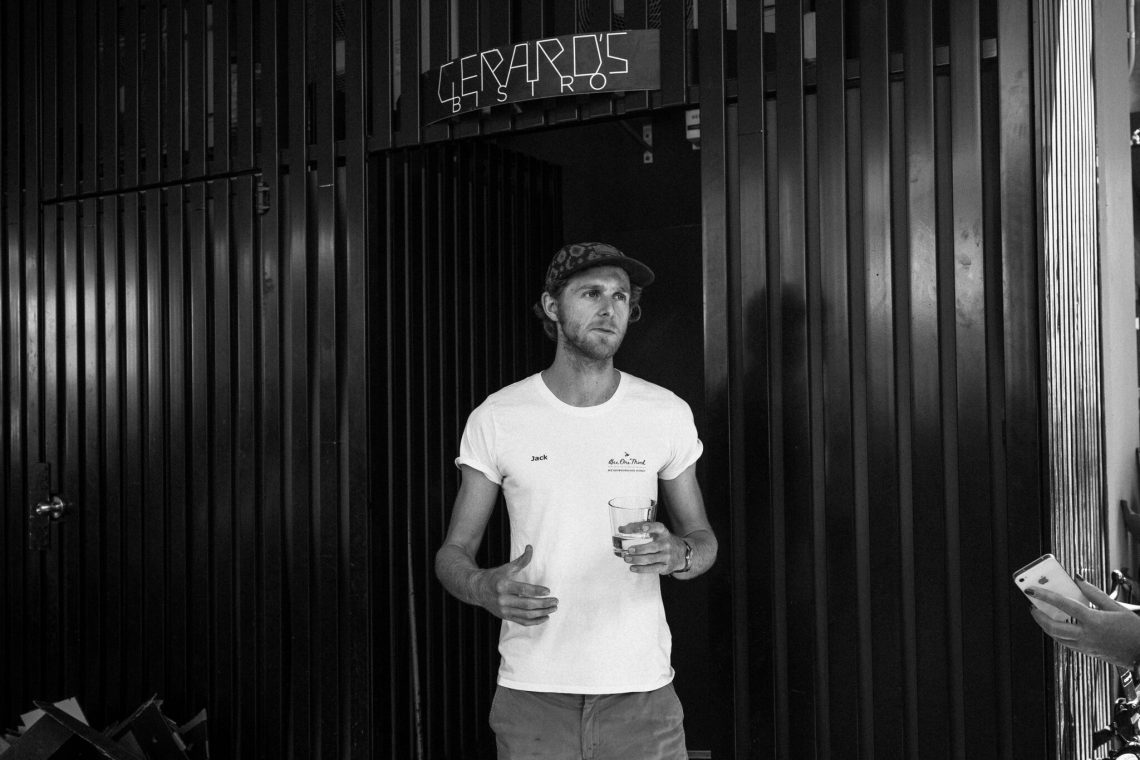The highly anticipated second edition of the James St Guide is now available – get your hands on a copy before it’s too late!
James St’s second published guidebook, created for locals and visitors alike, features a carefully curated summary of the boutiques, galleries, eateries and laneways to be discovered in the sub-tropical urban oasis that is James St.
Editorial in style, the book is divided into five dedicated categories including: New Stories; Lifestyle + Design; Fashion; Health + Beauty and of course Food. Introductions to the diverse retailers in each category sit alongside original images that invite you to view James St with a fresh perspective.
There are four new Stories – one which features a conversation with Jack Stone aka the urban apiarist of the precinct. View the full conversation below:
Urban Apiarist – JACK STONE
In an effort to bolster the local bee population, Bee One Third’s founder and urban apiarist Jack Stone maintains beehives on rooftops across the region. He is a regular around James Street, checking on our rooftop hives and harvesting the honey made by our pollen-loving friends.
How did you become interested in beekeeping?
I was looking to somehow grow food in the city while educating people about the importance of where their food comes from. Bees were the perfect connection between food production and inner-city landscapes.
How is Brisbane’s bee population going?
Brisbane bees are thriving. People are responding well to the idea of having insects back in the city and we are noticing more bee-friendly and pollinator insect friendly gardens are popping up. It has been really rewarding to see the varieties of honey that the bees have collected, and that is a direct representation of what people are planting in their gardens.
What goes in a bee-friendly garden?
Any plants that produce a flower that then, in turn, produces nectar and pollen, which are the two food sources of the bee. Nectar we know as honey and pollen is the protein of the bee’s food. So anything from rosemary and lavender all the way down to eucalyptus gum trees and flowering bottlebrushes and trees that promote bird life and insect life.
Are you seeing more awareness about the plight of bees?
Definitely. We are seeing a greater awareness around the plight of the bees, which in turn is educating and raising a discussion around the treatment of bees and the unfortunate industrialisation of what was a very humble, calming pastime. But the awareness is very much around the inner city and people are responding well to buying local honey, supporting local beekeepers and also planting their gardens to support the wildlife and insects in their area.
What is so calming and humble about beekeeping as a pastime?
There is nothing really between you and the bees when you are in checking the hives. There is nothing else you are able to focus on – the phone doesn’t exist and there is the sound of birds chirping in the background and this very light hum underneath your hands.
You find a new sense of peace in the moment, because bees are reactive to energy. So if you are trying to be fast and get in and out of the beehive quickly, the bees will respond in an aggressive manner because they don’t want something disturbing the hive. You are forced to slow down and put thought into the process at hand, which is what a lot of people find so comforting about keeping bees – that forced sense of calm.
What’s one thing we can all do to help bees?
Purchase honey from your local area – find out who the local beekeepers are and open up a dialogue with them.
Also, be conscious of buying fruits and vegetables seasonally and buying Australian grown. Australian bees are out pollinating those vegetables, fruits and seeds, and that’s going to support the local bee population.
If you are a little bit more adventurous, it is not too hard to plant some pollinator-friendly shrubbery and plants that are an aromatic and visual addition to the garden.
How much honey do you extract from the James Street hives?
We don’t take everything from the beehives. We always leave a certain portion of honey for the bees just in case there is a drought that happens in the city, but we still harvest about 300kg per year from the James Street rooftop.
How is the honey in James Street different from other areas in Brisbane?
The honey changes from location to location and from season to season, so you have this beautiful irregularity with the product. The honey from James Street is a direct representation of what’s in flower and what is in season at that time of year.
What is your favourite way to eat honey?
A slab of fresh honeycomb from the beehive slathered over warm crumpets, with really nice salted butter.
@beeonethird

Posted on
—
April 4, 2018





